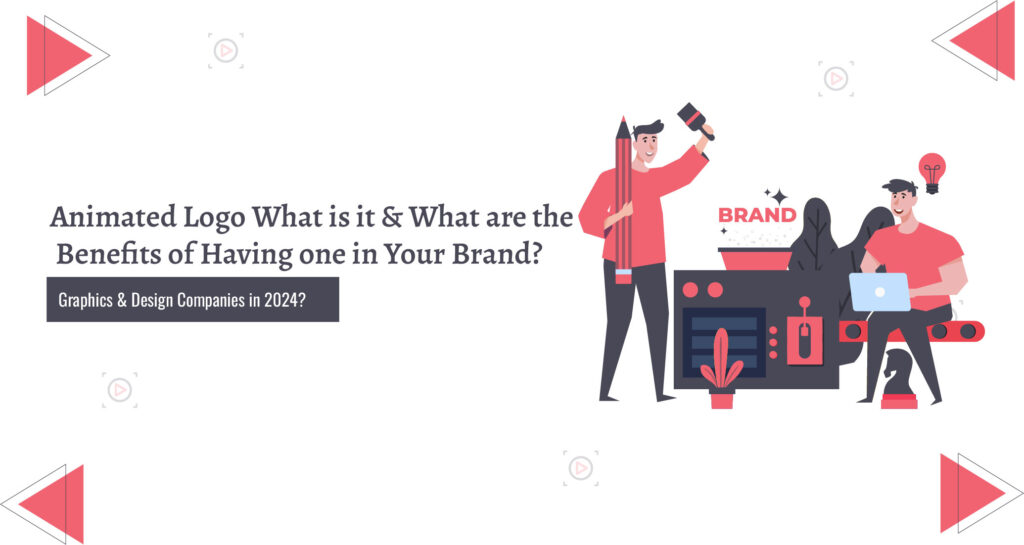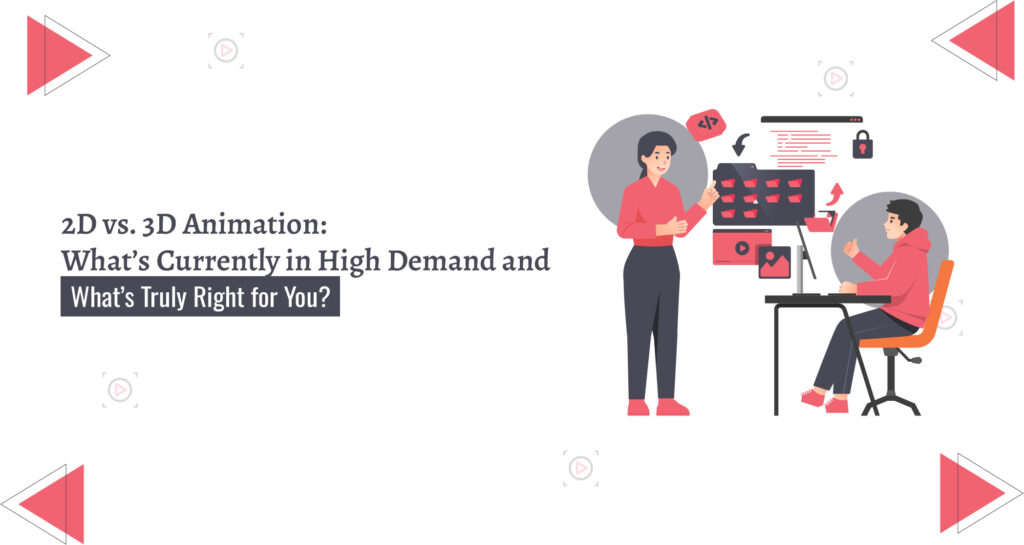Animated Logo What is it & What are the Benefits of Having one in Your Brand?
A logo serves as the face of the brand and plays a crucial role in distinguishing you from your competitors. It is the initial introduction of your brand to the world. In the rapidly advancing landscape of technology and evolving consumer habits, logos need to adapt in line with marketing strategies. This is where an animated logo becomes relevant. An animated logo design brings your business to life. It helps create a quick and lasting image of your brand in the viewer’s eye. By doing so, you not only retain old customers but also acquire new ones. Moreover, viewers can recognize your brand just by looking at your logo (if you do branding effectively). Consider Nike or Apple viewers are likely to spot them at a glance. Now that you’re familiar with the basics of a logo, let’s move on to animated logos. What is an Animated Logo? Animated logos change a static emblem into a dynamic visual experience by adding effects and motion. This can vary from subtle animations to fully immersive video representations. Essentially, it enhances a traditional static or image-only logo by incorporating engaging visual elements. Creating a compelling business logo animation depends on various factors such as the brand’s objectives, its identity, and the intended audience. For superior outcomes, investing in professional logo animation services is highly advisable. Experts with specialized skills and knowledge can deliver results that stand out from the rest. Animated Logo vs. Static Logo When considering logo animation services, the common question arises: Should you invest in animated logos or stick with static ones? Animated logos Create your visual identity significantly. They simplify complex information, engage viewers more effectively, and convey your brand’s message with clarity. In contrast, static logos often struggle to communicate effectively. Utilizing 3D animation services allows your logo to narrate your brand’s vision and goals akin to a concise video presentation. Consequently, many businesses leveraging video content prefer animated logos over static ones. If you’re investing in video resources, opting for an animated logo can maximize your impact and align with your brand’s dynamic storytelling approach. What are the Benefits of Creating an Animated Logo for Your Business? Animated logos captivate viewers with dynamic motion and visual storytelling, enhancing brand recognition and memorability. They convey brand identity more vividly than static logos, making a lasting impression across digital platforms. By integrating animation, brands can effectively communicate complex messages and engage audiences on a deeper level. This approach not only updates the brand image but also matches evolving consumer preferences for interactive and visually appealing content. 1. How to Improve and Strengthen Brand Recognition: The primary advantage of an animated business logo is enhanced recognition. If a picture is worth a thousand words, then animation is worth millions. Animated visuals are not only more engaging but also more memorable than static images. While a standard logo might only catch a glance, an animated logo can capture attention for up to 10 seconds, significantly increasing the chances of leaving a lasting impression. Moreover, incorporating animation into your marketing campaigns boosts the likelihood that users will remember your brand for an extended period. With animated logos, your marketing efforts are far more likely to achieve lasting impact. 2. An Effective Medium for Great Storytelling: In today’s digital age, where users spend countless hours immersed in online activities every day, the internet serves as a vast canvas for brand storytelling. When it comes to effectively communicating your brand’s narrative, the options for advertising are plentiful. By leveraging top-tier 3D logo animation services, You can start a journey to create a logo that not only represents your brand but also captivates your audience. An animated logo goes beyond visuals it becomes an integral part of your video content strategy, enriching the storytelling process. Video content, known for its ability to evoke deep emotional responses from viewers, becomes even more potent when complemented by a dynamic logo. Conversely, opting for a static logo risks disrupting the seamless flow of your brand’s narrative and emotional engagement with your audience. An animated logo, on the other hand, delivers a polished and engaging effect that resonates deeply with viewers, enhancing their overall experience 3. Techniques to Capture Viewer’s Attention Effectively Through Visual Content: We live in a fast-paced era where capturing and maintaining viewer attention is crucial. One of the most effective strategies to achieve this is by leveraging expert 2D animation services in the USA. This approach can help you captivate your audience with engaging and visually appealing animated logos. Moreover, viewers often form their initial impressions about your product or service within the first few seconds of encountering your animation. A compelling animated logo increases the likelihood that they will pay attention to your message. Furthermore, businesses that incorporate video content enjoy higher conversion rates compared to those that do not. Introducing animated logos into video content enhances engagement even further. If video content alone can yield significant results, imagine the enhanced impact of integrating logo animation services. 4. It Stands Out as One-of-a-Kind in Its Category: The possibilities for animations are limitless. Many businesses have similar logos, which can make them forgettable to customers. However, with logo animation, your logo becomes uniquely yours. Logo animation services ensure that each brand’s logo stands out and remains memorable. A distinctive logo leaves a lasting impression on both potential and existing customers. By incorporating special effects and dynamic movements, you can significantly impact viewers’ memory retention. This means they’ll recognize your logo instantly upon seeing it again. Creativity knows no bounds, so how you design your logo is entirely up to you. Use colors, textures, motion, typography, or illustrations whatever it takes to differentiate yourself. In essence, go all out to ensure you stand out from the crowd. 5. Eliciting Viewer Emotions through Engaging Content: Videos and animations are powerful tools for stirring emotions in your audience. While text can be persuasive, visual imagery and graphic design often have a stronger impact. Animation allows you to


